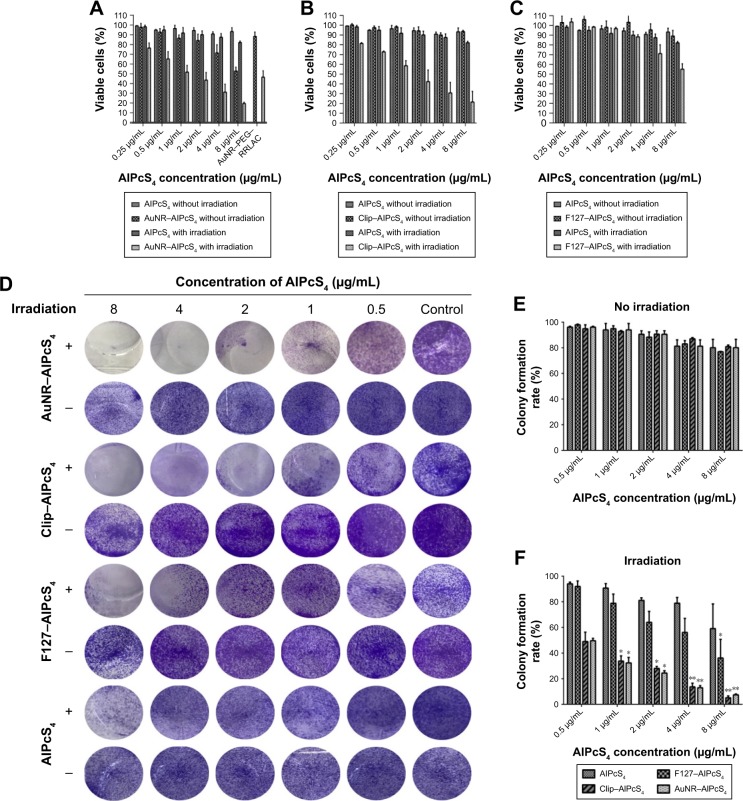Figure 2.
The anti-growth and antiproliferation effects of AuNR–AlPcS4, Clip–AlPcS4, and F127–AlPcS4 on SGC-7901 cells evaluated by the CCK-8 assay and colony formation assay.
Notes: (A–C) The dark cytotoxicity (without irradiation) and photocytotoxicity (with irradiation) of AuNR–AlPcS4, Clip–AlPcS4, F127–AlPcS4, and AlPcS4 on SGC-7901 cells. The cells were treated with 0.25–8 µg/mL AuNR–AlPcS4, Clip–AlPcS4, F127–AlPcS4, and AlPcS4 for 6 hours and incubated again for 24 hours. (D) The antiproliferation activity by AuNR–AlPcS4, Clip–AlPcS4, F127–AlPcS4, and AlPcS4 on SGC-7901 cells. The cells were treated with AuNR–AlPcS4, Clip–AlPcS4, F127–AlPcS4, and AlPcS4 at 0.5–8 µg/mL, irradiated by laser light and then incubated continuously for 12 days. After being treated, the cells were fixed with 4% paraformaldehyde, stained with crystal violet, and photographed. (E and F) The colony formation rates were quantified (+ represents irradiation; − represents no irradiation). The experiment was repeated three times. The data represent the average of three experiments and the error bars show SD. *P<0.05, represents statistical difference in colony formation rate between AlPcS4 carriers and AlPcS4. **P<0.01, represents statistically significant difference in colony formation rate between AlPcS4 carriers and AlPcS4.
Abbreviations: AlPcS4, Al(III) phthalocyanine chloride tetrasulfonic acid; CCK-8, Cell Counting kit-8; Clip, cationic liposome; RRLAC, arginine-arginine-leucine-alanine-cysteine peptide.

